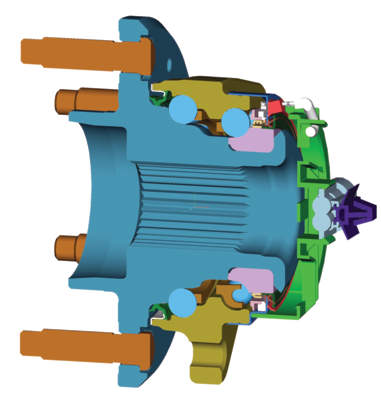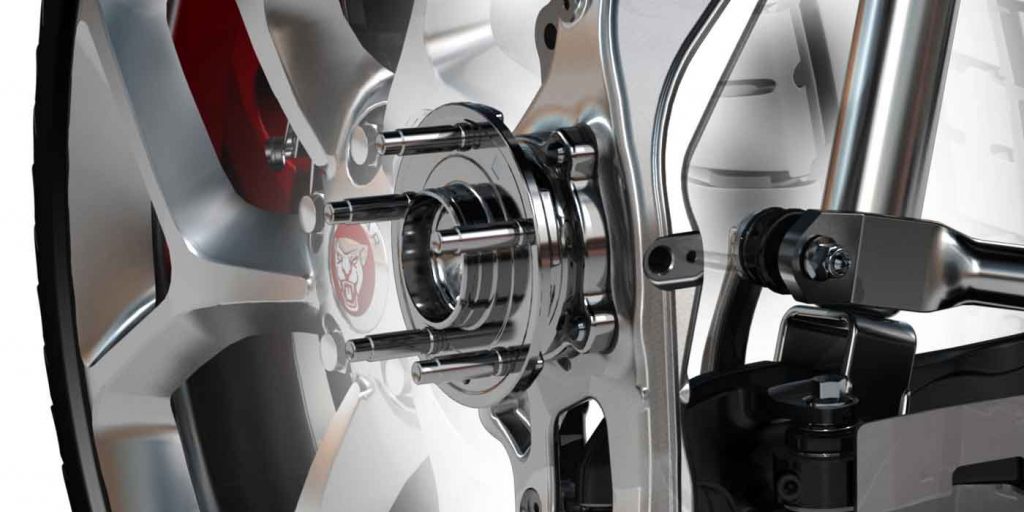The classic symptom of a bad wheel bearing is typically a cyclic chirping, squealing or growling noise that changes in proportion to vehicle speed. The sound may disappear at some speeds or only occur at certain speeds. The noise may get worse when turning, or it may disappear momentarily. So, it’s difficult to make a diagnosis based on noise alone.
Misdiagnosis
The noise can also be misleading. A caliper that’s sticking or a brake pad that’s loose and dragging may make a metallic scraping noise as it rubs against the brake rotor. The frequency of the noise will also change in proportion to vehicle speed, but will often go away or change when the brakes are lightly applied. Noise that only occurs when braking is likely a brake problem such as worn pads, not a bad wheel bearing.
Tires can cause cyclical noise if the bands have shifted or if there is a road force imbalance. Uneven wear due to alignment issues is another factor for noise. Worn or failed bushings can also cause cyclical noise to be transferred to the body and frame.
Wheel bearing noises tend to travel through the drivetrain and exit through a transmission or engine mount that’s “grounding” the noise from the drivetrain to the chassis. This grounding effect causes a wheel bearing noise to be transferred far from its point of origin. For these and other reasons, it’s often very difficult to detect the early stages of wheel bearing failure.
If the growling noise were more noticeable in a specific gear range, a worn bearing in the transmission would generally cause the bearing noise. If the bearing noise is constant regardless of acceleration or deceleration and is approximately three times wheel speed in frequency, the faulty bearing would generally be found on the transmission output shaft or the driveshaft intermediate support bearing.

A popping or clicking noise when turning is a classic symptom of a bad outer CV joint. Also note the condition of the CV joint boot. If the boot is torn or leaking, it should be replaced regardless of the condition of the joint. If the CV joint is noisy, it needs to be replaced.
Some worn wheel bearings can often be detected by rocking the vehicle from side to side at low speeds with the steering wheel. This technique tends to increase the load on the bearings, causing the pitted bearing to become noisier than usual. This test works better when the vehicle is warm and in a parking area or roadway with light traffic.
One tool that is helpful in diagnosing wheel bearings is a wired or wireless microphone/stethoscope that can be attached to a knuckle. Once an engineer-only tool, the prices for these microphone/stethoscopes have dropped dramatically.
While there are no set specifications for noise or standardized mounting points for the listening device, it can allow you to compare the bearing on each side and compare while on a test drive. These devices can also allow you to eliminate components that could be the source of cyclical noises like CV joints, brakes and differentials.
On the Lift
To check for play, raise the vehicle so the wheel is off the ground, then grab the tire at the 12 and 6 o’clock positions and move it back and forth. As a rule, you should not feel any play or looseness if the vehicle has sealed wheel bearing cartridges or hubs with sealed wheel bearing assemblies. On older vehicles with serviceable wheel bearings, a little play is normal, but a lot of play is not. Refer to the vehicle’s service specifications for the maximum amount of acceptable play.
Wheel bearing play can be measured with a dial indicator by placing the dial indicator against the hub and rocking the wheel in and out by hand. As a rule, you should see no more than .005” of play in the bearings if the bearings are good, but some specifications are so low that you can’t feel any play and won’t be able to measure it with a dial indicator.
The improper installation of an axle nut is one of the most common causes wheel bearing comebacks. Most axle nuts should not be reused. If an old nut is used, it could work loose and destroy the preload of the bearing. When the preload is lost, the bearing will make a low frequency grumble. You can retighten the axle nut to see if the noise remains. Sometimes the noise will go away, but in some cases, the permanent bearing damage has already occurred.














